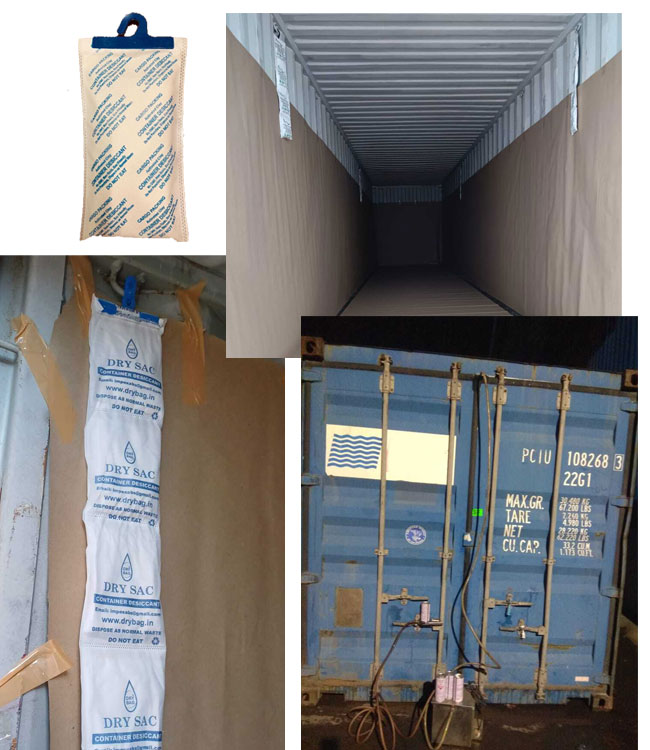Craft Paper Pasting & Desiccant (Silicagel Placing)
For fumigation in container lorries (typically used for transporting goods), the application of craft paper pasting and desiccant (silica gel) placement is essential to control moisture, protect the goods from mold or damage, and ensure the integrity of the cargo during transport. Here’s how these processes work in the context of fumigation and storage in container lorries:
Craft Paper Pasting for Fumigation
Craft paper pasting is utilized in fumigation to protect the surfaces of goods or container walls, providing a layer of insulation and preventing direct exposure to harmful chemicals used in fumigation. It can also help contain any vapors during the fumigation process, ensuring the chemicals don't escape.
Preparation of the Container:
Before fumigation, the container should be empty and clean.
Any sensitive or delicate goods may be wrapped in craft paper to provide an extra layer of protection during the fumigation process.
Cutting and Pasting Craft Paper:
Large sheets of craft paper are cut to fit the interior surfaces of the container (walls, floor, and ceiling) or the items being transported.
The paper is adhered to surfaces using appropriate adhesive methods (e.g., glue, tape) to ensure it stays intact throughout the fumigation process.
This layer serves to absorb excess moisture and helps reduce the impact of fumigant vapors on sensitive materials inside the container.
Sealing the Container:
Once the craft paper is pasted, any openings (such as doors or vents) should be properly sealed.
This helps contain the fumigant within the container and prevents leaks that may cause ineffective fumigation.
Fumigation Process:
Fumigants like methyl bromide, phosphine, or sulfuryl fluoride are introduced into the sealed container.
The craft paper acts as a buffer to prevent direct contact of chemicals with sensitive goods, and it helps in maintaining an even distribution of the fumigant.
Post-Fumigation:
Once fumigation is complete, the container should be ventilated, and any residual fumigant should be aired out.
The craft paper is often removed or left to disintegrate naturally if it's no longer needed, depending on its condition and whether it's biodegradable.
Craft Paper Pasting & Desiccant Placement in Container Lorries for Fumigation
Used to protect surfaces and items inside the container from direct chemical exposure during fumigation.
Helps to keep fumigant vapors contained and prevents damage to the container and goods.
Silica gel absorbs moisture inside the container, preventing rust, mold, and mildew formation on sensitive goods during fumigation and transport.
It ensures a dry environment, particularly important for items sensitive to humidity.

